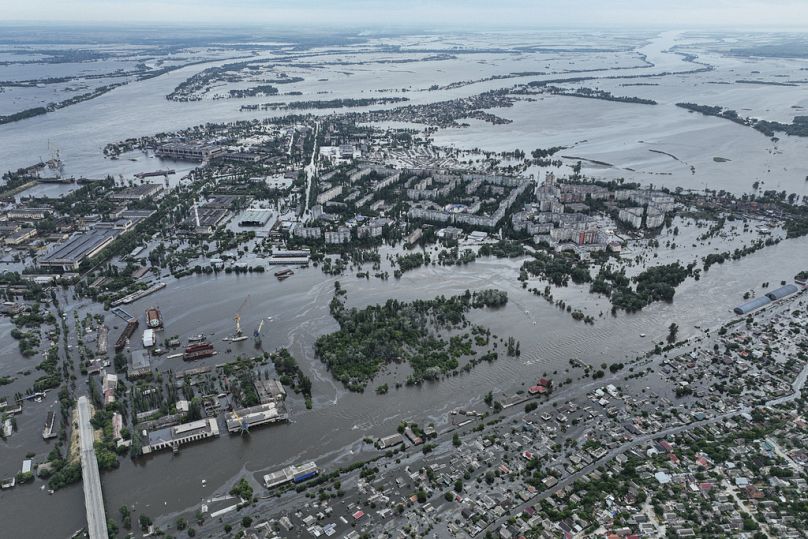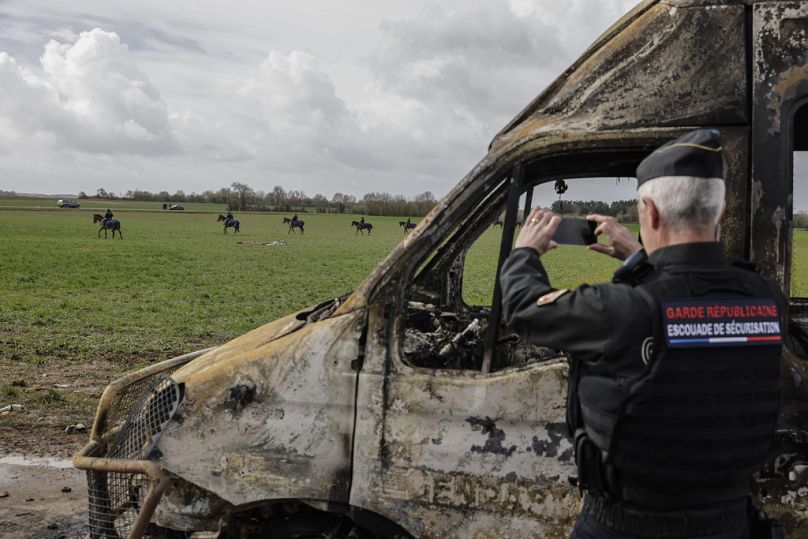A new study has shown that the rapid growth in water as a trigger, weapon and casualty of violence got significantly worse in 2023.
New research has revealed that violence over water resources increased dramatically in 2023, continuing a steep growth trend of such incidents over the past decade globally.
The study by the Pacific Institute, a global water think tank, confirmed that these violent events include attacks on water systems, unrest and disputes over the control of and access to water, as well as the use of water as a weapon of war.
In 2023, 150 per cent as many incidents were recorded as in 2022 - some 347 events versus 231.
It’s even starker when compared to records from the year 2000, when there were only 22 such incidents recorded.
Why has water-related violence risen so sharply?
In 2010, a UN resolution explicitly recognised the essential human right to water and sanitation and, since then, it’s been increasingly acknowledged that extreme weather - including drought and flooding - is further straining water systems around the world.
Due to the findings from 2023, the Pacific Institute has been forced to make a major update to its Water Conflict Chronology, known as the world’s most comprehensive open-source database on water-related violence.
The experts behind the document identified the incidents from sources including news reports, eyewitness accounts, and other conflict databases.
The information was released at the same time as the world’s largest international conference on water, Stockholm’s World Water Week, which came to an end on Thursday (29 August).
The theme at that event was ‘Bridging Borders: Water for a Peaceful and Sustainable Future’, and the focus was on combating the kind of incidents reported by the Institute.
Water-based violence is not a new concept.
The Water Conflict Chronology was created by the Pacific Institute in the 1980s and it includes verified instances where water and water systems have been a trigger, target, casualty or weapon of violence.
Despite the database being only around 40 years old, it extends back over 4,500 years and, today, the Chronology includes over 1,920 cases of violence associated with water resources and systems. It shows a clear worsening of water-related violence in recent decades.
Climate change, war and population growth are sparking water conflict worldwide
“The significant upswing in violence over water resources reflects continuing disputes over control and access to scarce water resources, the importance of water for modern society, growing pressures on water due to population growth and extreme climate change, and ongoing attacks on water systems where war and violence are widespread, especially in the Middle East and Ukraine,” explains Dr Peter Gleick, Senior Fellow and co-founder of the Pacific Institute.
However, despite Gleick’s singling out of those regions, water conflicts were actually reported in all major regions around the world in 2023.
While violence over water in the Middle East, Southern Asia, and sub-Saharan Africa continued to dominate the database, 2023 saw increases in all categories of conflicts globally.
Although Europe is one of the least affected regions - and there was a slight decrease in the large number of attacks on water systems in the Russia-Ukraine war reported in 2023 versus 2022 - the ongoing conflict on the edge of the continent did still see a number of incidents of water-related violence.
In late January 2023, the city of Odessa in Ukraine was temporarily left without water after widespread Russian attacks on urban energy and water systems.
Russia also attacked the Dnipro hydropower plant near Zaporizhzhia, Ukraine, in February 2023 and Ukrainian leaders also claim the Kakhovka Dam on the Dnipro River was destroyed by their enemy on 6 June 2023 - something Russia still denies.
Regardless of culpability, the incident caused more than 50 deaths as well as massive flooding, ecological devastation downstream and the cutting off water supply for cities, power plants and irrigation systems.
Where else in Europe faced water-based conflict in 2023?
Western Europe has also seen some incidents of water violence, too.
In late March 2023 in France, as many as 200 protesters and 50 police officers sustained injuries in a protest in Sainte-Soline in the west of the country.
Demonstrators were calling on officials to stop the construction of giant water ‘basins’ to irrigate crops. They threw projectiles, including improvised explosives, at police, who then chose to respond with tear gas, water cannons and rubber bullets.
Water-based violence does tend to be isolated to an individual country.
For instance, subnational conflicts between farmers and pastoralists in Africa, as well as among urban and rural water users, religious groups and family clans in 2023, made up 62 per cent of all events, in comparison to transboundary events - where two or more nations were involved - which accounted for just 38 per cent in comparison.
Other findings by the Institute showed that attacks on water and water infrastructure accounted for half of the incidents in 2023. Additionally, violence triggered by disputes over access and control of water accounted for 39 per cent and water was used as a weapon of war 11 per cent of the time.
But what’s behind the rise in these incidents?
“The large increase in these events signals that too little is being done to ensure equitable access to safe and sufficient water and highlights the devastation that war and violence wreak on civilian populations and essential water infrastructure,” Morgan Shimabuku, senior researcher with the Pacific Institute, explains.
“The newly updated data and analysis exposes the increasing risk that climate change adds to already fragile political situations by making access to clean water less reliable in areas of conflict around the world.”
How can we bring water-based violence to an end?
As well as setting out specific incidents of violence, the Pacific Institute also focuses on identifying and understanding strategies that can help to reduce the risks of it happening in the first place.
“It is urgent that we work to reduce the threat of water-related violence. The best ways to do this are to move to more resilient and effective water policies that guarantee safe water and sanitation for everyone, strengthen and enforce international agreements and laws over shared water resources, and address the growing threats posed by extreme droughts and floods worsened by climate change,” Gleick says. “Solutions are available, but to date they have been insufficiently applied.”
He and his team believe the rise in water-related conflict has diverse drivers and causes. Put simply, that means addressing the problem requires a wide variety of approaches and strategies to work towards building water resilience and confronting underlying causes head on.
In places where drought and climate change are contributing to tensions over water, the Institute suggests policies can be put in place to more equitably distribute and share water among stakeholders.
They also suggest that technology can be used to more efficiently identify what water is available to be utilised.
The enforcement of international laws of war that protect civilian infrastructure like dams, pipelines and water-treatment plants is essential, the Institute says.
When used effectively, these laws can provide essential protections that uphold the basic human right to water.
Used alongside improved cybersecurity practices, which can reduce the threat of cyber-attacks that try to weaponise access to water for communities, these tools could see an end to water-based violence in the near future.













